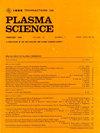Development of a Semiconductor Opening Switch at Soreq NRC
IF 1.3
4区 物理与天体物理
Q3 PHYSICS, FLUIDS & PLASMAS
引用次数: 0
Abstract
The semiconductor opening switch (SOS) diode, invented in Russia around three decades ago, is attractive for a variety of pulsed power applications due to its ability to interrupt currents of thousands of amperes in several nanoseconds in inductive storage generators. This allows delivering hundreds of megawatts into the load. The SOS has a p+-p-n-n+ structure, where the p-n junction depth could beSoreq核研究中心半导体开路开关的研制
半导体开路开关(SOS)二极管是三十年前在俄罗斯发明的,由于它能够在几纳秒内在感应存储发电机中中断数千安培的电流,因此对各种脉冲功率应用具有吸引力。这样就可以向负载输送数百兆瓦的电力。SOS具有p+-p-n-n+结构,其中p-n结深度可达$\sim 200~\mu $ m。因此,这种结构的制造过程需要在非常高的温度下进行长时间的扩散,并且不适合在常规晶圆厂批量生产。我们提出了设计,仿真,制造,并在Soreq NRC开发的硅SOS二极管的测试。它由$180~\mu $ m外延结构组成,pn结深度为$\sim 110~\mu $ m。在单晶片测试中,我们使用了快速驱动电路。在匹配的$50~\Omega $负载上获得峰值负电压1515 V,上升时间为1.56 ns。电压上升率为0.97 kV/ns,是单个Si电流中断芯片获得的最高记录。为了在高压(HVs)下测试二极管,我们使用了两套基于磁压缩的基于sos的发电机。我们比较了俄罗斯开发的原始SOS二极管与一堆epi-SOS二极管。在第一次设置中,使用了由65个模具组成的epi-SOS,其横截面为25 mm2。反向电流为927 A。$46~\Omega $负载的峰值电压为37.4 kV,上升时间为25 ns。在第二次设置中,使用了由130个模具串联而成的epi-SOS,这些模具的横截面分别为1、2和3 cm2。对于3 cm2的堆叠,在$\sim 224~\Omega $低电感电阻负载上获得了173 kv, 7.5 ns的上升时间脉冲。
本文章由计算机程序翻译,如有差异,请以英文原文为准。
求助全文
约1分钟内获得全文
求助全文
来源期刊

IEEE Transactions on Plasma Science
物理-物理:流体与等离子体
CiteScore
3.00
自引率
20.00%
发文量
538
审稿时长
3.8 months
期刊介绍:
The scope covers all aspects of the theory and application of plasma science. It includes the following areas: magnetohydrodynamics; thermionics and plasma diodes; basic plasma phenomena; gaseous electronics; microwave/plasma interaction; electron, ion, and plasma sources; space plasmas; intense electron and ion beams; laser-plasma interactions; plasma diagnostics; plasma chemistry and processing; solid-state plasmas; plasma heating; plasma for controlled fusion research; high energy density plasmas; industrial/commercial applications of plasma physics; plasma waves and instabilities; and high power microwave and submillimeter wave generation.
 求助内容:
求助内容: 应助结果提醒方式:
应助结果提醒方式:


